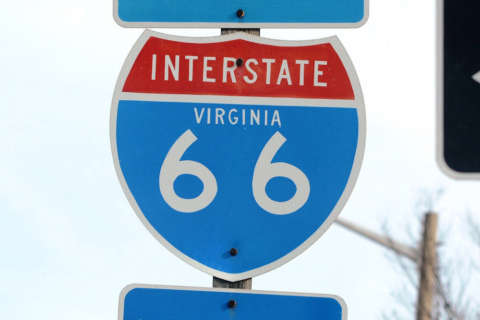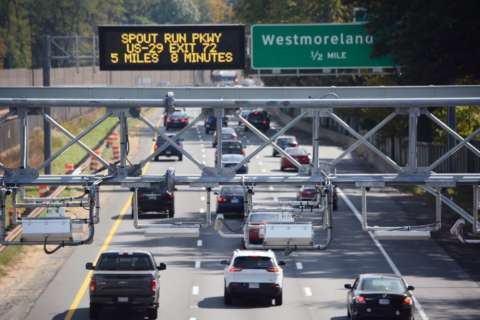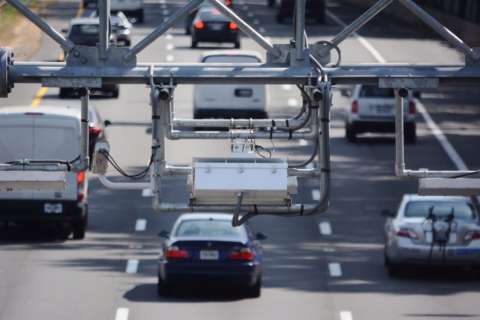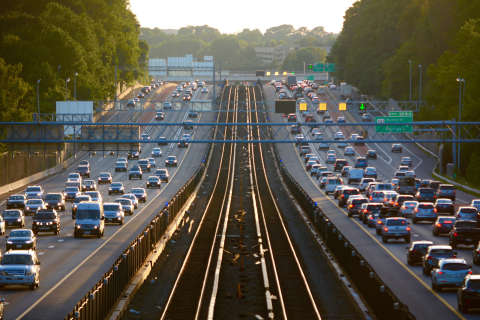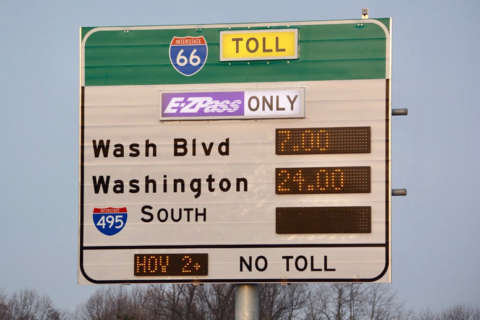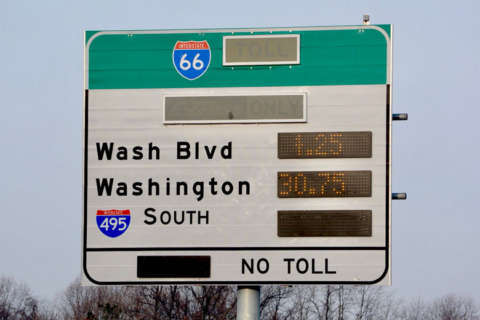WASHINGTON — Tolls for solo drivers and expanded rush-hour periods began Monday, Dec. 4, on Interstate 66 inside the Capital Beltway.
Under the previous rules, with a few exceptions, only motorcycles, buses and cars with two or more people were legally able to use the road during specific rush-hour periods in the mornings and evenings.
Under the new expanded hours, drivers must now have at least one other person in the car and an E-ZPass Flex transponder in HOV mode to ride free from 5:30 a.m. to 9:30 a.m. toward Ballston and Rosslyn, or from 3 p.m. to 7 p.m. weekdays from Rosslyn and Ballston toward the Beltway.
All drivers, except motorcycles, must have an E-ZPass to use the road during those times now.
Drivers without another person in the car must pay a toll during the expanded rush-hour periods; that toll rises and falls based on the amount of traffic in the lanes. In the first days since the new tolls were rolled out, rates ranged from lows of about $5 to a high of $40 during the morning commutes.
WTOP listeners have submitted a series of questions about the complicated rules that we took to state transportation officials.
Who has to pay, and how much? How do the tolls work?
Any driver riding alone during the restricted times, including traffic to or from Dulles International Airport and in hybrid vehicles, must pay an automated toll that rises and falls based on traffic in the lanes.
The aim of the tolls is to keep traffic moving. As demand goes up, so does the price.
Like other HOV or toll lanes in the region, drivers are charged a toll based on the distance traveled. When entering the lanes, signs will indicate the current price of a short trip, middle-length trip and the longest trip. Trips in between will be priced between those points.
In addition, VDOT also has released an I-66 Express Lanes toll calculator that shows current prices and allows drivers to look at prices at past dates and times.
Drivers without an E-ZPass will get a violation notice in the mail with additional fees unless they go to the state’s tolling website to pay the toll.
What times do the new rules apply?
The new weekday rush-hour period on I-66 inside the Beltway is 5:30 a.m. to 9:30 a.m. toward U.S. 29 in Rosslyn, and 3 p.m. to 7 p.m. toward the Beltway.
This is an expansion from the previous two and a half hours each way, where drivers were legally required to have at least one other person in the car to use the road. (Up to half of drivers were believed to be breaking that law.)
If you’re driving outside of those times, the road operates like any other highway.
That includes no change for reverse commuters, who can continue to use the road from D.C. toward the Beltway in the morning and from the Beltway toward D.C. in the afternoon. Trucks continue to be banned on I-66 inside the Beltway.
If your solo commute now falls inside the expanded hours, what are your options?
For drivers caught in the additional hours, the options to avoid a toll are to start a carpool, shift commuting hours, or take transit, such as some of the new bus service that has been rolled out.
Alternative routes include Route 50 and 29. VDOT officials said they will be monitoring adjacent roadway systems to adjust traffic signal timing as needed.
What is an E-ZPass Flex? How do you get one?
During the new hours, an E-ZPass is now required for all drivers, except motorcycles, to avoid a violation. An E-ZPass Flex mounted in the car and switched to High Occupancy Vehicle mode is required to legally ride free with two or more total people in the car. The Flex transponder, which beeps when switched into the mode, indicates to the toll system and police that the car is traveling as an HOV.
Drivers can trade in an existing Virginia E-ZPass transponder for an E-ZPass Flex, or start a new account online or at many Northern Virginia grocery stores.
There is no additional charge for the Flex transponder as long as it is used for an HOV trip once every six months. If it is not, Virginia charges a one-time $10 fee.
For drivers with a Maryland E-ZPass account, the regular E-ZPass can also be traded in for an E-ZPass Flex through that state’s system by calling the state’s E-ZPass customer service center. Regular E-ZPass transponders from any state will work to pay a toll on the road, but only the Flex transponders allow carpoolers to travel for free.

